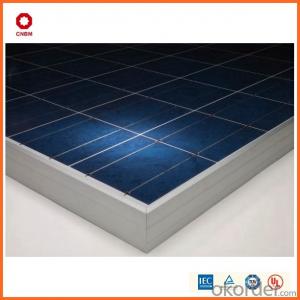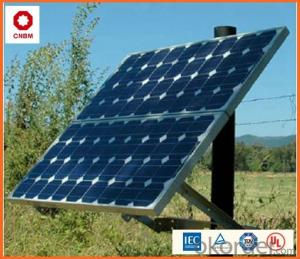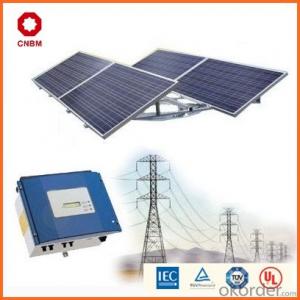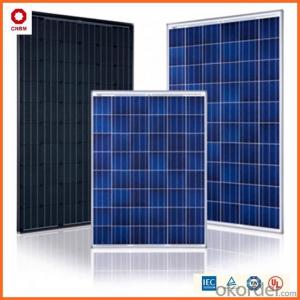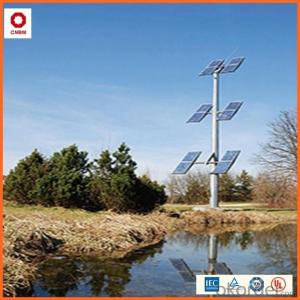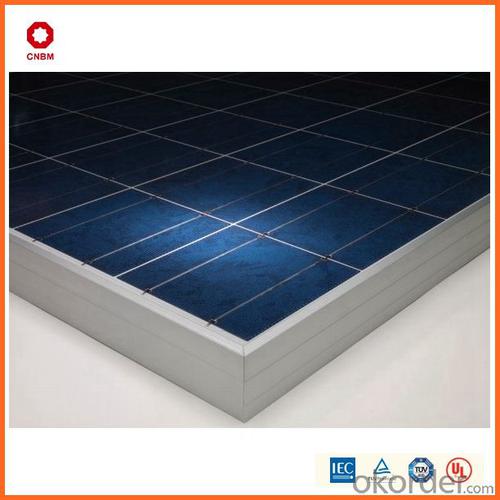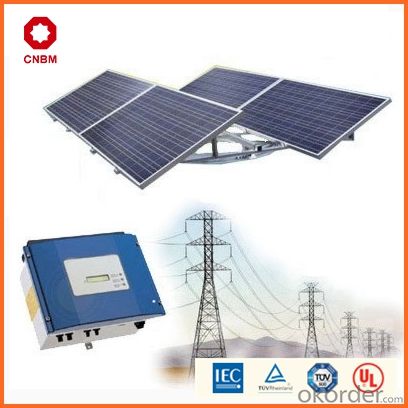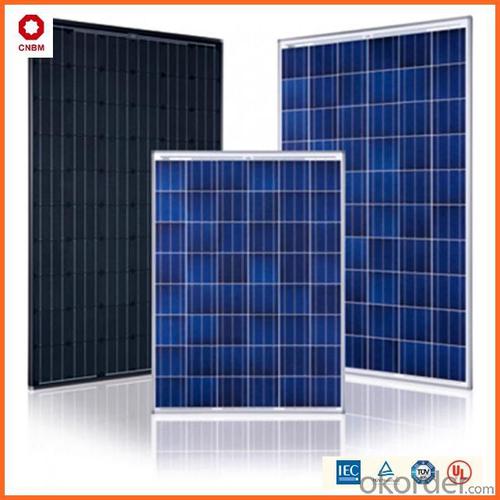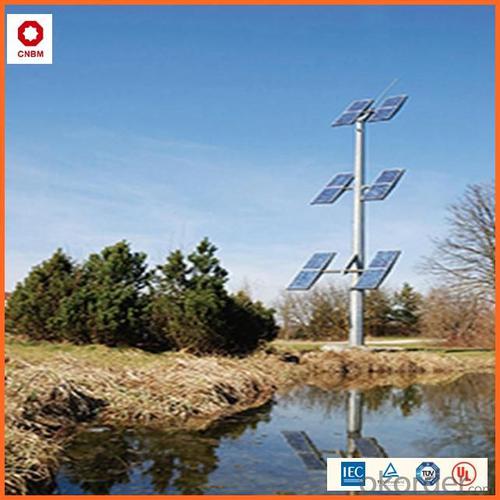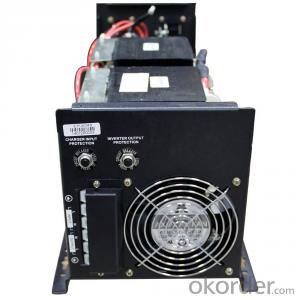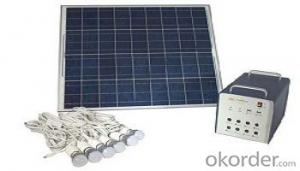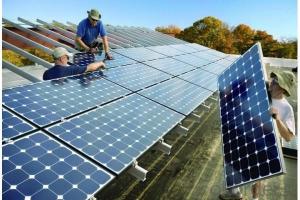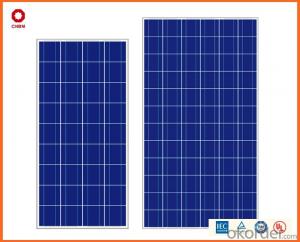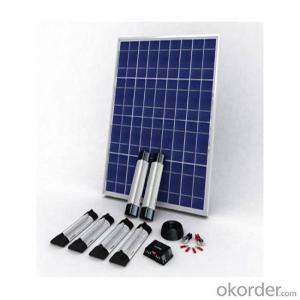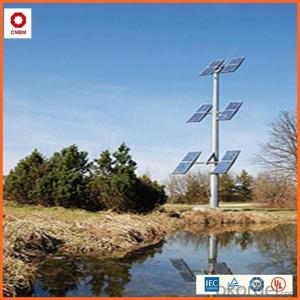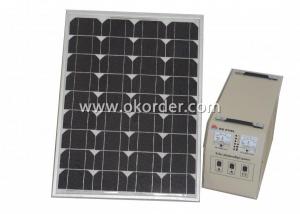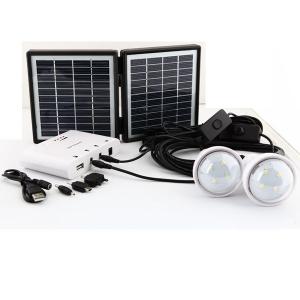Solar Energy Systems Company 65w Poly Small Solar Panels On Stock With Good Quality
- Loading Port:
- China main port
- Payment Terms:
- TT OR LC
- Min Order Qty:
- 1 watt
- Supply Capability:
- 10000000 watt/month
OKorder Service Pledge
OKorder Financial Service
You Might Also Like
Specification
Hot Sale !!! Quality and Safety of Small Poly Solar Panel 25~85w
1. Rigorous quality control meets the highest international standards.
2. High-transmissivity low-iron tempered glass, strong aluminium frame.
3. Using UV-resistant silicon.
4. IS09001/14001/CE/TUV/UL
Warranties of Small Poly Solar Panel 25~85w
1. 10 years limited product warranty
2. 15 years at 90% of the minimal rated power output
3. 25 years at 80% of the minimal rated power output
Specification
Characteristics of Poly solar panels CNBM (25-85W) | |||||
Max Power Voltage Vmp(V) | 30.3 | 30.8 | 31.1 | 31.4 | 31.85 |
Max Power Current Imp(A) | 7.60 | 7.64 | 7.73 | 7.81 | 7.85 |
Open Circuit Voltage Voc(V) | 36.1 | 36.6 | 37 | 37.3 | 37.68 |
Short Circuit Current Isc(A) | 8.50 | 8.55 | 8.65 | 8.75 | 8.85 |
Max Power Pm(W) | 230W | 235W | 240W | 245W | 250W |
Temperature Coefficient of Cells Poly solar panels CNBM (25-85W) | |
NOCT | 45± 2 |
Temperature Coeffucients of Isc | 0.0492 |
Temperature Coeffucients of Voc | -0.3374 |
Temperature Coeffucients of Voc | -0.4677 |
Mechanical Data of Poly solar panels CNBM (25-85W) | |
Dimension | 1638 × 982 × 40 mm |
Weight | 19.5 kg |
No. of Cells and Connections | 60 (6 ×10) |
Tolerance | 0 ~ + 5 W |
Cell | Monocrystalline Cell 156 × 156 mm |
Packing | 624 Pcs/40ft(H) Container |
Limits of Poly solar panels CNBM (25-85W) | |
Operating Temperature | -40 to +85 |
Storage Temperature | -40 to +85 |
Max System Voltage | 1000VDC(IEC) / 600VDC(UL) |
Features of our products:
• High conversion efficiency mono/poly-crystalline amorphous silicon solar cells
• Modules incorporate high performance bypass diodes to minimize the power drop caused by shading
• High transmittance, low-iron tempered glass
• High performance EVA encapsulant to prevent destroying and water.
• AI frame: without screw, corner connection. 8 holes on the frame can be installed easily
• Good performance of preventing from atrocious weather such as wind and hails
• Certifications: CE IEC TUV VDE UL, Class I
• 10 years 90% power output warranty
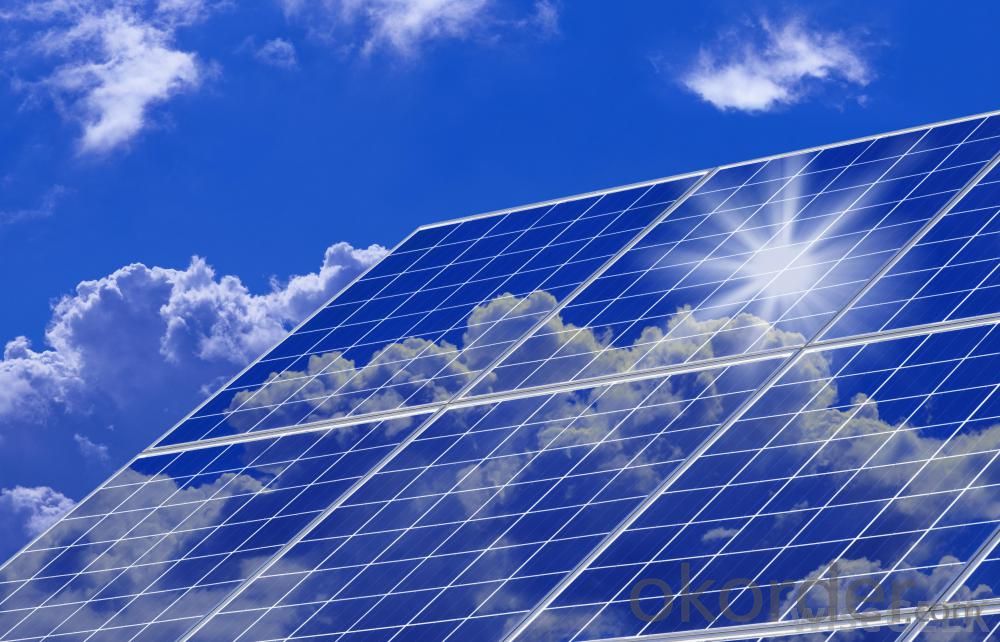
Shipping of Small Poly Solar Panel 25~85w
By Sea | Delivery from Shanghai or Ningbo seaport |
By Air | Departure from Shanghai Pudong Airport |
By Express | Post by DHL, EMS, UPS, TNT. |
- Q: Are there any risks of electrical arcing with solar energy systems?
- Yes, there are risks of electrical arcing with solar energy systems. Electrical arcing occurs when there is a breakdown in the insulation of electrical components, resulting in the flow of electricity through air or other non-conductive materials. This can lead to a fire hazard and damage to the solar energy system. Some potential causes of electrical arcing in solar energy systems include faulty wiring, loose connections, and damage to the solar panels. These issues can result in an increased risk of electrical arcing, which can cause overheating, melting of components, and even electrical fires. To mitigate the risks of electrical arcing, it is crucial to ensure that the solar energy system is installed and maintained by qualified professionals who follow industry standards and regulations. Regular inspections and maintenance should be conducted to identify and address any potential issues that could lead to electrical arcing. Furthermore, the use of high-quality electrical components and proper grounding techniques can help reduce the risk of electrical arcing. Implementing safety measures such as circuit breakers, surge protectors, and arc fault circuit interrupters (AFCIs) can also provide additional protection against electrical arcing. In summary, while solar energy systems offer numerous benefits, it is important to be aware of the potential risks of electrical arcing. By ensuring proper installation, maintenance, and adherence to safety guidelines, the risks can be minimized, allowing for the safe and efficient operation of solar energy systems.
- Q: Are there any disadvantages of solar energy systems?
- Although solar energy systems offer numerous advantages, they also have a few drawbacks. One major disadvantage is the high initial installation cost, which can be unaffordable for certain individuals or businesses due to the substantial expenses associated with purchasing and setting up solar panels. Moreover, external factors such as weather conditions, shading, and panel angles can affect the efficiency of solar panels, limiting their effectiveness in specific locations. Another drawback is the intermittent nature of solar power, as it can only be generated during daylight hours and is unavailable during cloudy or nighttime conditions. This necessitates the installation of costly battery systems for energy storage or reliance on the grid during non-generating periods. Lastly, the production of solar panels requires the use of certain materials, some of which are non-renewable and can have negative environmental impacts during the extraction and manufacturing processes. Nonetheless, advancements in technology and decreasing costs are continually enhancing the efficiency and affordability of solar energy systems.
- Q: Can solar energy systems be used for emergency backup power during power outages?
- Yes, solar energy systems can be used for emergency backup power during power outages. Solar panels generate electricity from sunlight, which can be stored in batteries for later use. This stored energy can then be used to power essential devices or appliances during an outage, providing a reliable source of backup power.
- Q: What is the impact of dust storms on solar panel efficiency?
- Dust storms have a significant impact on solar panel efficiency as they can reduce the amount of sunlight reaching the panels and hinder their ability to generate electricity. The accumulation of dust particles on the surface of the panels creates a barrier that blocks sunlight, reducing the amount of energy that can be converted into electricity. This leads to a decrease in overall energy output, affecting the efficiency and performance of the solar panels. Regular cleaning and maintenance of the panels are necessary to mitigate the negative impact of dust storms and ensure optimal efficiency.
- Q: What is the maintenance schedule for a solar energy system?
- The maintenance schedule for a solar energy system typically involves regular cleaning of the panels, checking for any damage or debris, and inspecting the system's overall performance at least once a year. Additionally, it is important to monitor and maintain the batteries, inverters, and other components as needed.
- Q: Can solar energy systems be used in areas with high levels of windborne debris?
- Yes, solar energy systems can still be used in areas with high levels of windborne debris. While it is true that windborne debris such as tree branches or other objects can potentially damage or obstruct solar panels, there are measures that can be taken to mitigate these risks. One common solution is to install protective measures such as wire mesh screens or barriers around the solar panels to prevent debris from directly hitting them. These screens can be designed to allow sunlight to pass through while acting as a shield against potential damage. Additionally, the design and mounting of solar panels can be optimized to withstand high winds and debris. Solar panels are typically installed at an angle that allows debris to slide off rather than accumulate. Mounting systems can also be reinforced to ensure stability during strong winds. Regular maintenance and cleaning of solar panels are also important in areas with high levels of windborne debris. This helps to remove any accumulated debris and ensures the panels are operating at maximum efficiency. It is worth noting that the benefits of solar energy, such as its environmental friendliness and cost-effectiveness, often outweigh the potential risks associated with windborne debris. With proper planning, installation, and maintenance, solar energy systems can still be successfully utilized in areas with high levels of windborne debris.
- Q: Can a solar energy system be used in cold climates?
- Yes, a solar energy system can be used in cold climates. While it is true that solar panels are most efficient in sunny and warm conditions, they can still generate electricity in cold climates. In fact, solar panels can even perform better in colder temperatures due to their ability to convert sunlight into electricity more efficiently. Additionally, snowfall on solar panels can be beneficial as it acts as a natural cleaner, reflecting more sunlight onto the panels and increasing their efficiency. However, it's essential to consider the angle and position of the panels to ensure they receive optimal sunlight throughout the year. Overall, with proper installation and maintenance, solar energy systems can be effectively utilized in cold climates to generate clean and renewable energy.
- Q: How long do solar energy systems typically last?
- Solar energy systems typically last for 25 to 30 years, but with proper maintenance and regular inspections, they can even surpass this lifespan.
- Q: Can solar energy systems be used in powering recreational facilities like gyms or spas?
- Yes, solar energy systems can definitely be used to power recreational facilities like gyms or spas. In fact, many gyms and spas are already utilizing solar energy as a sustainable and cost-effective solution for their power needs. Solar panels can be installed on the roof or in the vicinity of the facility to capture sunlight and convert it into electricity. This clean and renewable energy source can then be used to power various equipment such as lighting, air conditioning, heating, and other electrical systems within the gym or spa. By incorporating solar energy systems, recreational facilities can significantly reduce their reliance on traditional energy sources, such as fossil fuels. This not only helps to reduce carbon emissions and combat climate change but also provides long-term financial benefits. Solar power can result in substantial energy savings over time, as gyms and spas can generate their own electricity and potentially even sell excess power back to the grid. Moreover, solar energy systems can be seamlessly integrated into the design of recreational facilities. The sleek and modern look of solar panels can enhance the overall aesthetic appeal of the facility, while also demonstrating its commitment to environmental sustainability. This can attract environmentally conscious customers who value businesses that prioritize renewable energy and contribute to a greener future. In summary, solar energy systems are a viable and increasingly popular option for powering recreational facilities like gyms or spas. By harnessing the power of the sun, these facilities can reduce their carbon footprint, save on energy costs, and attract environmentally conscious customers.
- Q: How do I maintain a solar energy system?
- To maintain a solar energy system, regular cleaning and inspection of the panels is crucial. Remove any debris or dirt that may obstruct sunlight absorption. Additionally, check the wiring and connections periodically to ensure they are secure and free from damage. Monitor the system's performance and keep track of any changes in energy production. Lastly, it is advisable to schedule professional maintenance once or twice a year to address any potential issues and optimize the system's efficiency.
Send your message to us
Solar Energy Systems Company 65w Poly Small Solar Panels On Stock With Good Quality
- Loading Port:
- China main port
- Payment Terms:
- TT OR LC
- Min Order Qty:
- 1 watt
- Supply Capability:
- 10000000 watt/month
OKorder Service Pledge
OKorder Financial Service
Similar products
Hot products
Hot Searches
Related keywords
